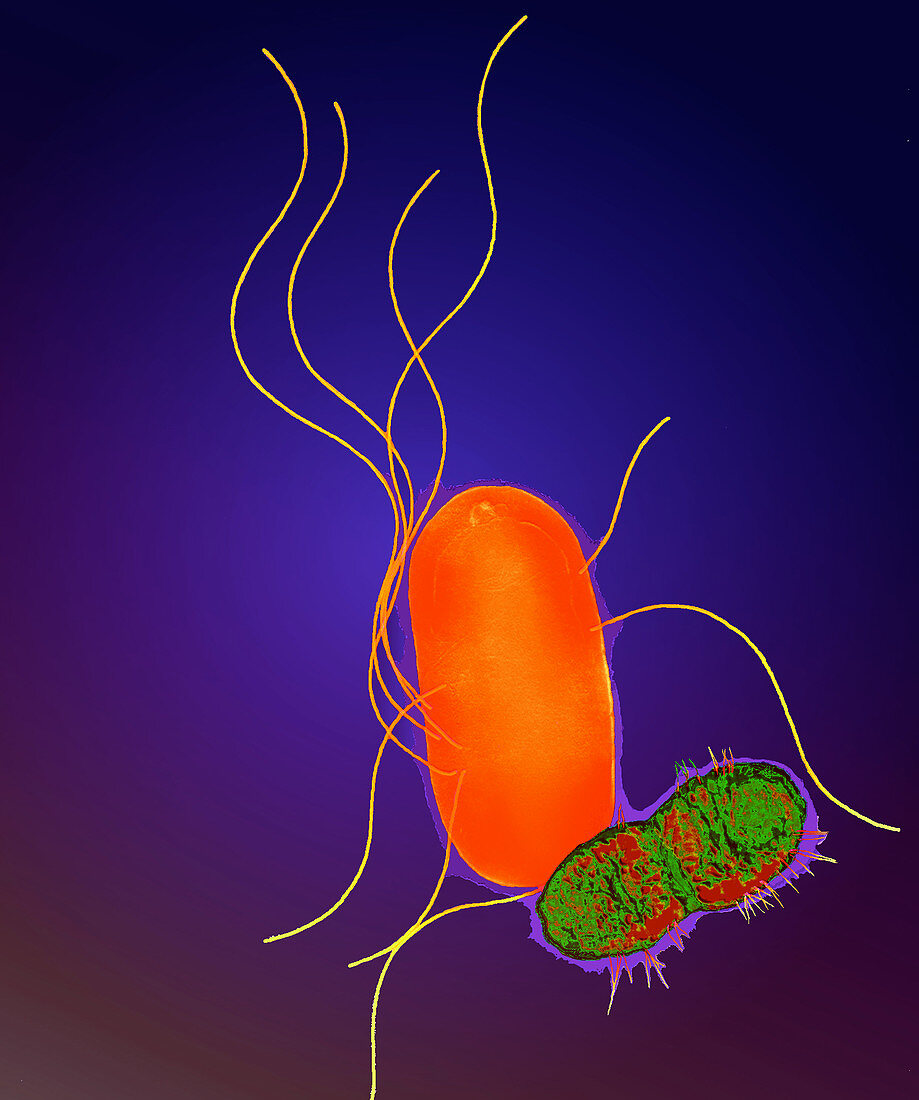Proteus bacteria
Bildnummer 11524203

| Proteus bacteria. Coloured transmission electron micrograph (TEM) of a section through Proteus sp. bacteria. These Gram-negative bacteria have two forms. A short bacillus (rod-shaped) bacterium (green) is dividing by binary fission to form two identical daughter cells. It uses its stubble-like fimbriae to attach to other cells and to substr- ates. The other larger form (orange) is covered in whip-like flagella with which it moves around and colonises new areas by a process called swarming. Proteus bacteria are normally found in soil,but also occur in the human intestine. They can cause urinary tract infections. Magnification unknown | |
| Lizenzart: | Lizenzpflichtig |
| Credit: | Science Photo Library / DR LINDA STANNARD, UCT |
| Bildgröße: | 2480 px × 2970 px |
| Modell-Rechte: | nicht erforderlich |
| Eigentums-Rechte: | nicht erforderlich |
| Restrictions: | - |
Preise für dieses Bild ab 15 €
Universitäten & Organisationen
(Informationsmaterial Digital, Informationsmaterial Print, Lehrmaterial Digital etc.)
ab 15 €
Redaktionell
(Bücher, Bücher: Sach- und Fachliteratur, Digitale Medien (redaktionell) etc.)
ab 30 €
Werbung
(Anzeigen, Aussenwerbung, Digitale Medien, Fernsehwerbung, Karten, Werbemittel, Zeitschriften etc.)
ab 55 €
Handelsprodukte
(bedruckte Textilie, Kalender, Postkarte, Grußkarte, Verpackung etc.)
ab 75 €
Pauschalpreise
Rechtepakete für die unbeschränkte Bildnutzung in Print oder Online
ab 495 €
Keywords
- bakteriell,
- Bakterien,
- Bakteriologie,
- Bakterium,
- Bazillus,
- elektronenmikroskopische Aufnahme,
- farbig,
- Fimbrien,
- Flagellen,
- Geißel,
- gramnegativ,
- Mikrobe,
- Mikroben,
- Mikrobiologie,
- Mikroorganismen,
- Paar,
- pathogen,
- Proteus sp.,
- Reproduktion,
- sektioniert,
- Stangen,
- Teilen,
- tem,
- Übertragung,
- Zellteilung,
- Zwei
